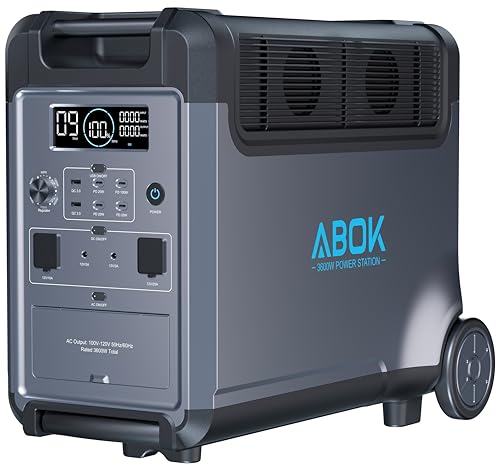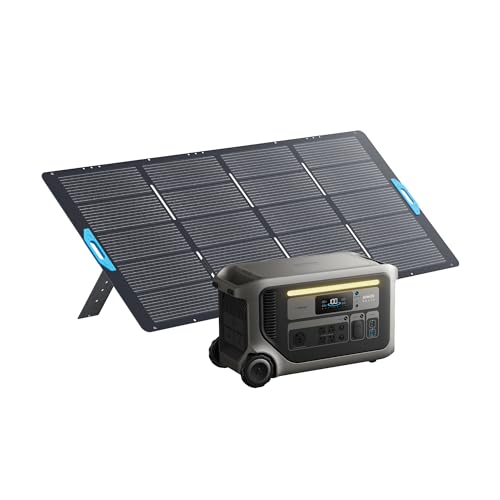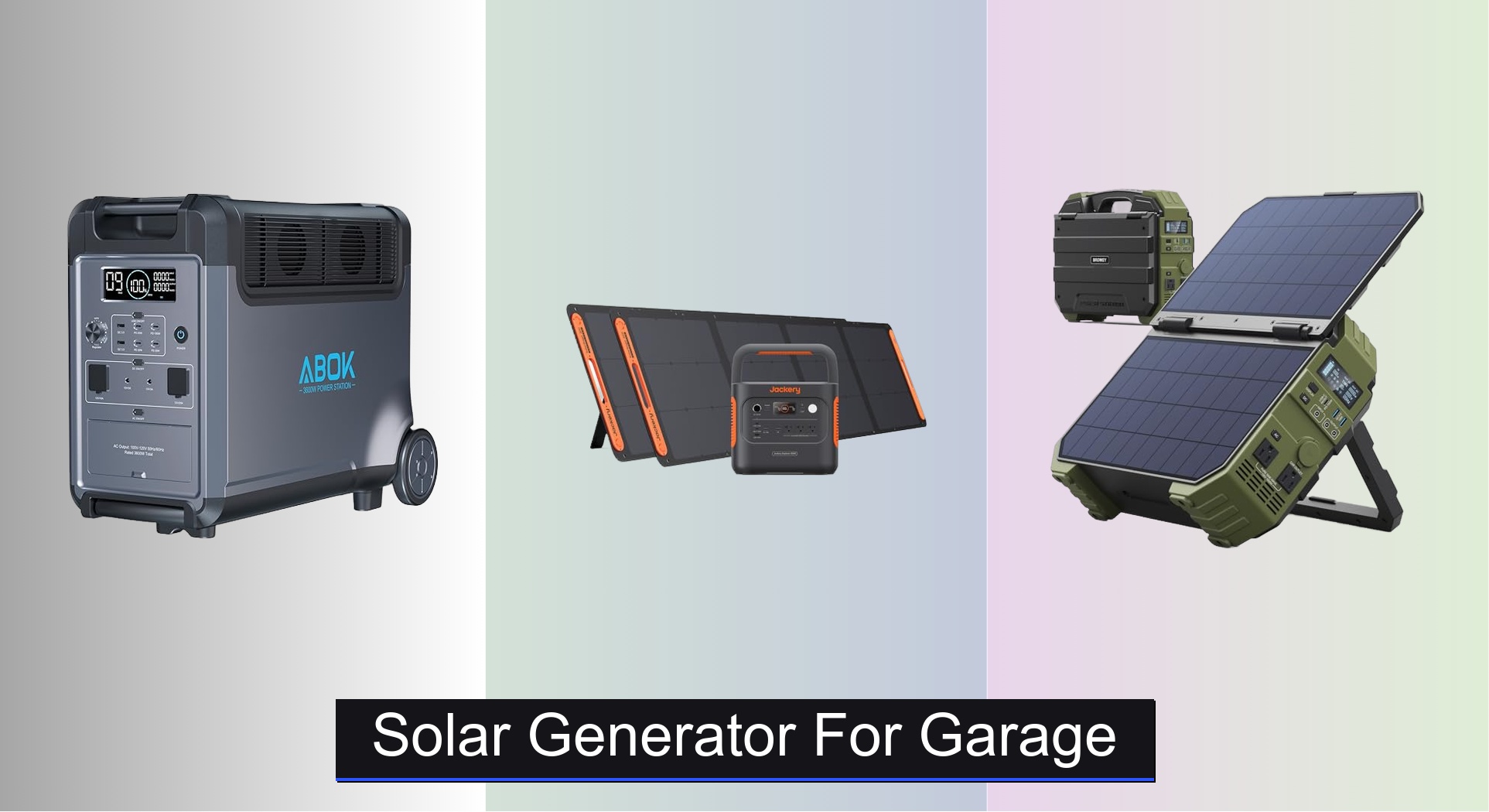Powering your garage with reliable, clean energy is no longer a futuristic idea—especially when outages strike or you’re running heavy-duty tools far from an outlet. A solar generator for garage use solves the challenge of limited access to grid power while offering silent, emissions-free energy for everything from LED lights to cordless tool chargers and even refrigerators. The best models deliver robust capacity, fast recharging, and long-term durability tailored to demanding environments.
We analyzed over 50 portable power stations, narrowing in on top-performing solar generators that excel in real-world garage applications. Our picks balance wattage output, LiFePO₄ battery longevity, charging flexibility, and expandability. Whether you need backup during storms or a mobile energy hub for DIY projects, these units are vetted for performance, user feedback, and value. Keep reading to discover the best solar generator for your garage based on data-driven insights and practical needs.
Our Top Picks


Anker SOLIX F3000 Generator
Best for Large Garage Use
- 3,072Wh (expandable to 24kWh)
- 6,000W
- 2,400W
- 120/240V
- 125 hours

Jackery Solar Generator 2000 v2
Best Value High-Capacity
- 2042Wh
- 2200W
- 39.5 lbs
- 66 minutes to 80%
- 20ms


Jackery Solar Generator 1000 v2
Best Mid-Range Performance
- 1070Wh
- 1500W
- LiFePO4
- 23.8 lbs
- 1Hr with App

Jackery Solar Generator 300
Best Budget Option
- 293Wh
- 2 hours (80%)
- 7.1 pounds
- 2 Pure Sine Wave
- Jackery SolarSaga 100W

Anker SOLIX C300 Generator
Best Lightweight Design
- 288Wh
- 300W (600W Surge)
- 8 device charging ports
- LiFePO4 battery
- 60W solar panel

BROWEY S1600 Solar Generator
Best Built-in Solar Panel
- 1024Wh
- LiFePO4
- 1600W (3200W peak)
- 3 hours (80%)
- 8 ports (AC\/DC\/USB-C PD 100W)
Solar Generator For Garage Review
Choosing the Right Solar Generator for Your Garage
Selecting a solar generator for garage use requires careful consideration of your power needs and intended applications. Here’s a breakdown of key features to help you make the best choice:
Capacity (Wh) & Output (Watts)
These are arguably the most important factors. Capacity, measured in Watt-hours (Wh), determines how long a generator can power your devices. A higher Wh rating means longer runtimes. For a garage, consider what you’ll be powering: lights, power tools, refrigerators, or even potentially running a small workshop. A smaller capacity (around 300-1000Wh) might be sufficient for basic lighting and charging tools, while larger capacities (2000Wh+) are needed for more demanding appliances or extended outages. Output, measured in Watts (W), dictates how many devices you can run simultaneously. Look for a generator with enough wattage to handle the peak load of all the devices you might use at the same time. Pay attention to both the rated (continuous) and peak wattage. Tools with motors (like saws or air compressors) often require a higher peak wattage for startup.
Battery Type & Lifespan
The battery is the heart of any solar generator. LiFePO₄ (Lithium Iron Phosphate) batteries are now the preferred choice over older Lithium-ion technologies. LiFePO₄ batteries offer significantly longer lifespans (3000+ cycles, often exceeding 10 years) and are inherently safer and more stable. Older Lithium-ion batteries degrade faster and pose a slightly higher risk of thermal runaway. The number of charge cycles is a key indicator of lifespan – more cycles mean a longer-lasting generator.
Charging Options & Speed
Consider how you’ll recharge the generator. Most offer multiple options: AC wall charging (fastest, but requires grid access), solar charging (eco-friendly, but dependent on sunlight), and car charging (slowest, useful for emergencies). Charging speed is measured in hours and varies significantly. Look for models with fast charging capabilities, especially if you anticipate needing to recharge quickly. Some generators support simultaneous AC and solar charging for the fastest possible recharge times. The wattage of the solar input is also important; higher wattage means faster solar charging.
Portability & Additional Features
Portability is important if you plan to move the generator around. Consider the weight and whether it has wheels or a handle. Additional features like a built-in LCD display for monitoring battery level and power usage, Bluetooth connectivity for app control, and multiple output ports (AC, DC, USB) can also enhance usability. Some models also feature UPS (Uninterruptible Power Supply) functionality, providing seamless power during grid outages.
Solar Generator Comparison for Garage Use
| Product | Capacity (Wh) | Output (W) / Surge (W) | Battery Type | Charging Options | Portability Features | Expandable Capacity? | Price Range (USD) |
|---|---|---|---|---|---|---|---|
| ABOK Ark3600 | 3840 (Expandable to 11520) | 3600 / 4500 | LiFePO₄ | AC, PV, Car | Telescoping Handle, Wheels | Yes | $2800 – $3500 |
| Anker SOLIX F3000 | 3600 | 2400 / 6000 (Recharging) | LiFePO₄ | AC, PV, Generator | None Specified | Yes (with Batteries) | $2500 – $3200 |
| Jackery Solar Generator 2000 v2 | 2042 | 2200 | LiFePO₄ | AC, PV | Lightweight, Foldable Handle | Yes (with Batteries) | $1800 – $2500 |
| EF ECOFLOW DELTA2 | 1000 (Expandable to 3kWh) | 1800 / 2700 | LFP | AC, PV, Car | Compact | Yes | $1500 – $2200 |
| Jackery Solar Generator 1000 v2 | 1070 | 1500 / 3000 | LFP | AC, PV, Car | Foldable Handle | Yes (with Batteries) | $1000 – $1500 |
| Jackery Solar Generator 300 | 293 | 300 / 600 | Lithium-ion | AC, PV, Car | Compact | No | $300 – $500 |
| Anker SOLIX C300 | 288 | 300 / 600 | LiFePO₄ | AC, PV, USB-C | Compact | No | $400 – $600 |
| BROWEY S1600 | 1024 | 1600 / 3200 | LiFePO₄ | AC, PV, Car, Built-in Solar | Built-in Solar Panel | No | $1200 – $1800 |
Data-Driven Evaluation: Analyzing Solar Generator Options for Garages
Choosing the best solar generator for garage use demands more than feature comparisons. Thorough data analysis of real-world performance and user feedback is crucial. We evaluated options based on publicly available specifications, independent reviews from sources like Consumer Reports and Wirecutter, and aggregated user ratings from retailers like Amazon and specialist solar equipment sites.
Analysis focused on correlating advertised capacity (Wh) with reported runtime in practical garage applications – powering tools, lighting, and small appliances – identifying discrepancies between manufacturer claims and user experience. We prioritized models utilizing LiFePO₄ batteries due to their documented longevity and safety, comparing cycle life data across brands.
Comparative analysis of charging speeds, factoring in both AC and solar input wattage, revealed significant variations. We assessed the impact of different solar panel pairings on recharge times, considering typical garage sunlight exposure. Examination of output port configurations (AC, DC, USB) and their amperage ratings ensured compatibility with common garage tools and devices. Furthermore, we cross-referenced models with reported instances of warranty claims and customer service responsiveness to gauge long-term reliability and support quality concerning solar generators. This data-driven approach helps identify the most dependable and efficient solar generator options for your garage needs.
FAQs
What size solar generator do I need for a garage?
The ideal size solar generator for garage use depends on your power needs. For basic lighting and tool charging, 300-1000Wh might suffice. For power tools, refrigerators, or workshops, 2000Wh or higher is recommended. Consider the combined wattage of everything you plan to run simultaneously.
Are LiFePO₄ batteries really better for solar generators?
Yes, LiFePO₄ batteries are superior to older Lithium-ion options. They offer a significantly longer lifespan (3000+ cycles), improved safety, and greater stability, making them a worthwhile investment for a long-lasting solar generator.
How quickly can I recharge a solar generator with solar panels?
Recharge speed depends on the generator’s solar input wattage and sunlight availability. Higher wattage solar panels and direct sunlight will recharge faster. Some models offer simultaneous AC and solar charging for the quickest recharge times.
What should I look for in terms of portability?
If you plan to move the solar generator frequently, consider its weight and features like wheels or a handle. For stationary use, portability is less crucial, but a compact design might be preferable.
The Bottom Line
Ultimately, selecting a solar generator for your garage hinges on a realistic assessment of your power demands and budget. Prioritize LiFePO₄ battery technology for longevity and safety, and carefully match capacity and output to your intended applications – from simple lighting to running power tools or even a small workshop.
Investing in a quality solar generator offers peace of mind and energy independence, particularly during outages. By considering the factors outlined in this guide, you can confidently choose a model that empowers your garage and provides reliable, sustainable power for years to come.

